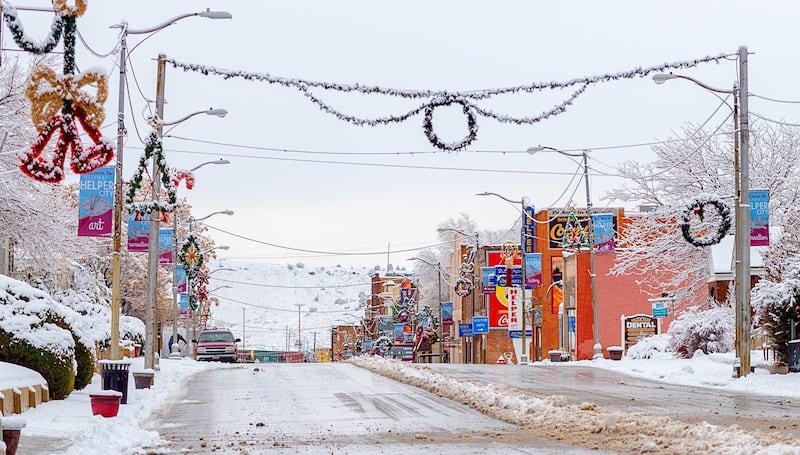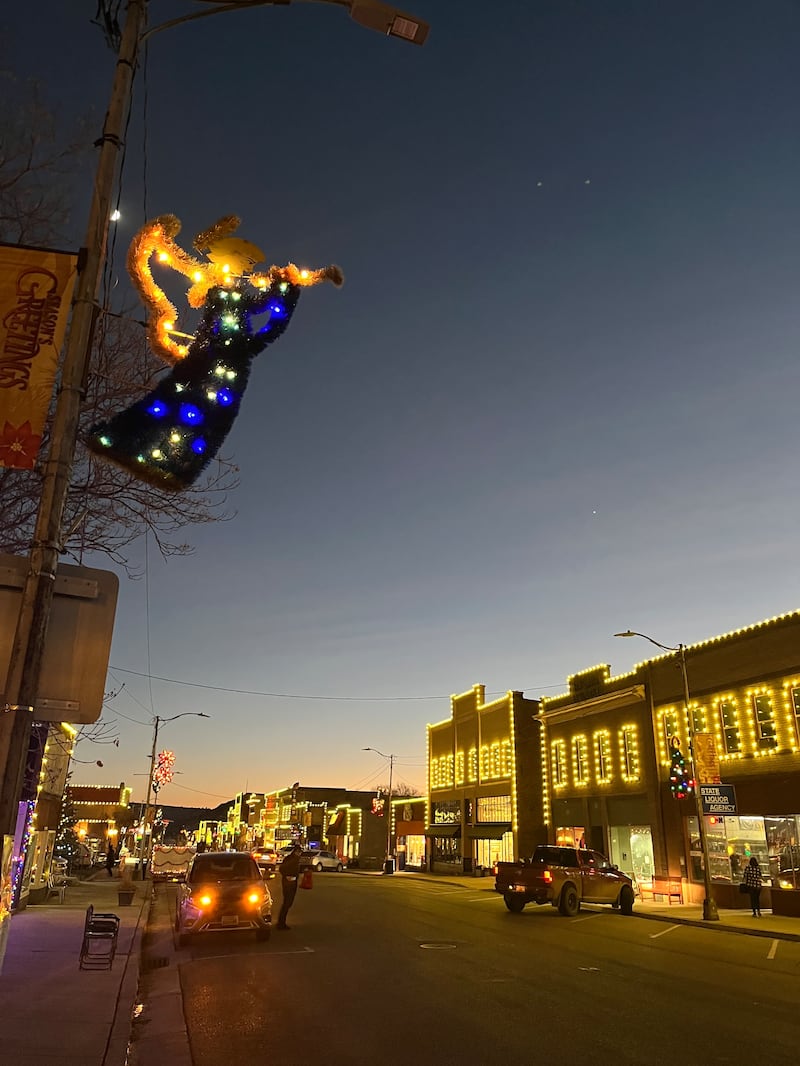This story appears in the December issue of Utah Business. Subscribe.
Utah’s 29 counties each offer businesses and employees something different. Named the best state in the nation two years in a row, it’s Utah’s varied counties that provide opportunities for all. In this series, I’ll be laying out the business case for each of them. Let’s visit Carbon County.
Like many counties in Utah, Carbon has a long history with the extractive industry. The county is aptly named for the area’s coal mines, and one of its four cities — Helper — was named for the helper engines that would assist heavily laden coal trains up Soldier Summit.
Now, as the county economy moves away from mining, a new artist-centered community brings new life to the town and new meaning to its name.
A Q&A with Lenise Peterman, mayor of Helper.
SBWT: What brought you to Helper and Carbon County? Why did you run for mayor?
LP: My partner is a fine artist, and she came down for an arts workshop in 2011 and said, “This is the place to be a full-time professional artist.” She relocated in 2012, and when I followed in 2015, I said, “You know, this is a great little town. We should work to revitalize it.” I co-chaired a revitalization committee and won a big grant on behalf of the city — experts came into our community to collect feedback from the citizens, and then they packaged [the findings] up. … After getting the report, I decided to run for office so the plan wasn’t thrown on a shelf.
SBWT: When did you first hear about or start talking about revitalizing Helper’s Main Street?
LP: It actually came about with that grant award. They basically packaged up a plan that said, “Beautify your Main Street. Make it attractive so people want to be in the area and want to come and see things.” We’re home to a huge amount of professional artists, and now we’ve built a Main Street where those artists now have Main Street galleries and can sell and make a living doing so. The grant really prompted the revitalization efforts. … We created a design, voted on it as a community, and built Main Street with volunteers over the course of nine weekends.
SBWT: After nine weekends, did you feel the work was finished, or has it been ongoing since then?
LP: It’s still evolving. We did what I call the heart of Main Street. [Later], we worked with Utah State University’s architecture group, … and they gave us a plan for how to extend it into our neighborhoods. … I have a master design plan, along with a sustainability plan that is very complimentary, that I can take bite-sized pieces of and [accomplish].
SBWT: Can you tell me about some of the other big players in the project?
LP: Gary DeVincent stumbled upon Helper while we were beginning to revitalize … and really saw that we were breathing life into this city. [He] purchased a couple of buildings and rehabilitated those buildings, which really activated the community. You didn’t want to be the building that was derelict or unoccupied. Now, you wanted to dress it up because your neighbor did. He’s been really important in that regard. But I continue to give [credit] to the citizens of Helper, who came out, did the volunteering, continue to support initiatives and show up when we need help. It’s definitely been a community-driven effort, and they all have pride and ownership in everything we’ve been doing.
SBWT: How have you seen the revitalization impact Helper?
LP: When I took over the city, I had a budget of about a million dollars. This year, our budget was about $1.8 million. We are definitely moving and gaining traction in the right direction, and we’re seeing that through sales [and property] tax. … That’s been very reaffirming. I think people have discovered Helper, both for the stellar artists we have as well as for the river restoration work. It was a six-phase fix-up [that included] recovering an endangered species of fish. Now, people can tube and fish and engage in the river. I think that’s been a real boom for us.

SBWT: How has Helper’s new Main Street bolstered your many parades and festivals?
LP: I have to give a shout-out to the Helper Arts, Music & Film Festival, which turned 30 this past August, and the upcoming Utah’s Christmas Town, which is 35 this year. I look at those two events as anchors that carried the city through some pretty dark times in the ’90s and 2000s. … Now, we have Helper Saturday Vibes, [an event with music in the park on Saturdays] twice a month, May through October. If we hadn’t had those two original anchor events, there probably wouldn’t have been a wave to catch, but … now people come to Helper because there’s stuff to do.
SBWT: Tell me more about Christmas Town and the Christmas light parade!
LP: It’s an amazing event spearheaded by Mark Montoya and Brenda Dieter, who do this out of service and volunteerism. It begins in November with a craft fair in our Civic Auditorium; they invite local craftsmen, vendors and food vendors to come in, and people can begin their Christmas shopping. The day after Thanksgiving, we do a Lights On Ceremony, where we turn on all of the lights on Main Street. … It’s really beautiful when we have our lights on. Then, the first full weekend in December, it’s breakfast with Santa, chili dinner, light parade, fireworks, all of those things.
SBWT: There are 17 ghost towns in Carbon County and only four cities, Helper being one of them. Is the Main Street refurbishment saving Helper from becoming another ghost town?
LP: If you had been here in 2015, you could have bought a building on our Main Street for nothing. It’s amazing to see that, in such a short period of time, all the buildings are purchased; they’re all either renovated or being renovated. People are sad they missed that opportunity. [Main Street] has such good bones and such great people who understood they had to embrace a changing paradigm for it to continue to be a vibrant place. The support for that change has been phenomenal. It’s hard for a community to change gears, to go from coal as a single economic driver to, “Hey, that’s not the future. We’ve got to do something different.” They were ready. They just needed a way to do it, and that’s all I’ve provided.
Quick Facts:
Mayor Peterman has secured $2.5 million in grants to support city development.
Helper earned the International Dark Sky Community designation in 2020.
Helper is home to the world’s largest coal miner statue, Big John, an 18-foot-tall fiberglass statue made by International Fiberglass using a pre-existing Paul Bunyan mold.
At the back of the Regis Club, visitors can find 12 pencil portraits of regular patrons that were drawn in the ’60s to pay off a tab.



